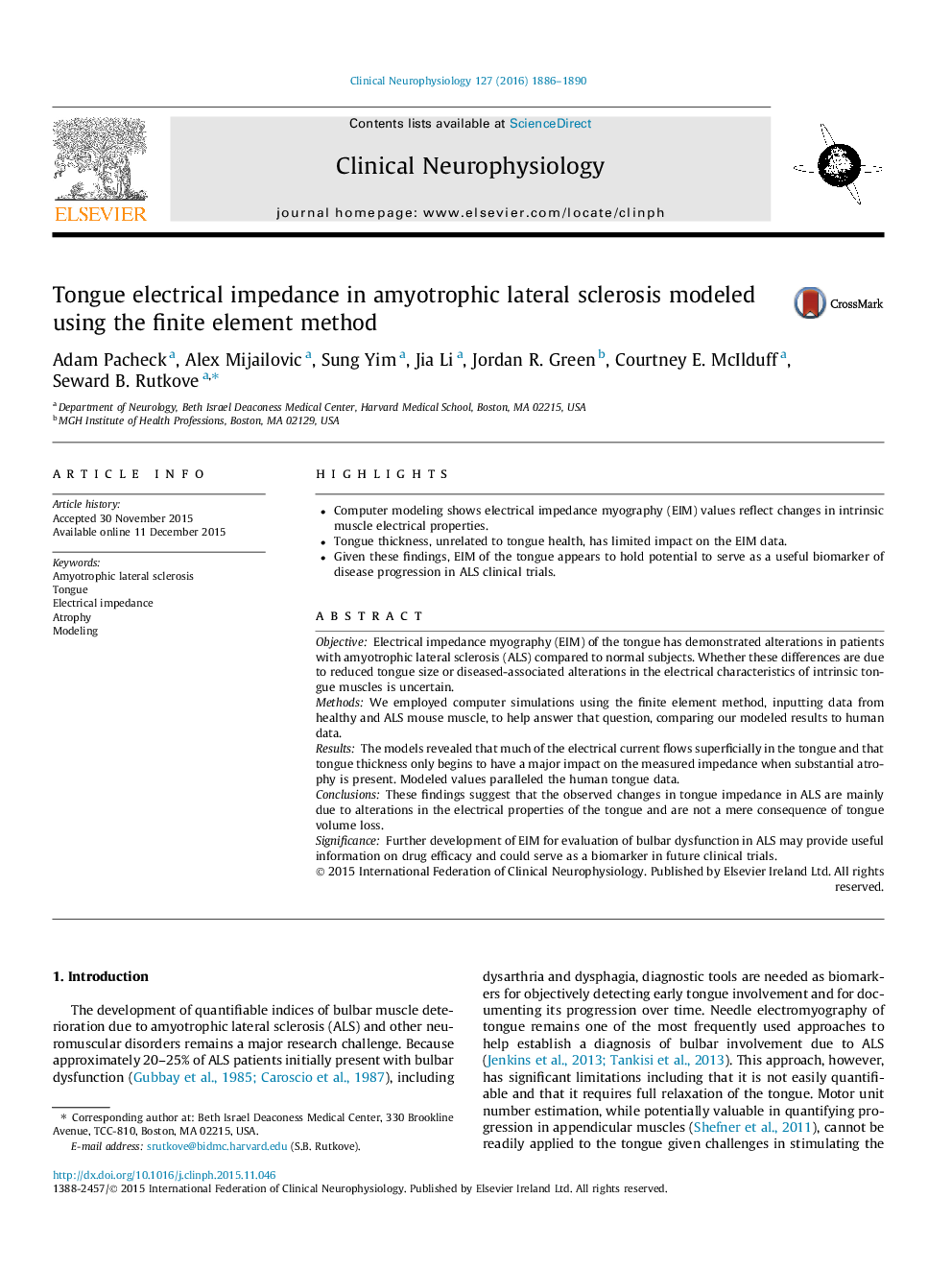| Article ID | Journal | Published Year | Pages | File Type |
|---|---|---|---|---|
| 3042902 | Clinical Neurophysiology | 2016 | 5 Pages |
•Computer modeling shows electrical impedance myography (EIM) values reflect changes in intrinsic muscle electrical properties.•Tongue thickness, unrelated to tongue health, has limited impact on the EIM data.•Given these findings, EIM of the tongue appears to hold potential to serve as a useful biomarker of disease progression in ALS clinical trials.
ObjectiveElectrical impedance myography (EIM) of the tongue has demonstrated alterations in patients with amyotrophic lateral sclerosis (ALS) compared to normal subjects. Whether these differences are due to reduced tongue size or diseased-associated alterations in the electrical characteristics of intrinsic tongue muscles is uncertain.MethodsWe employed computer simulations using the finite element method, inputting data from healthy and ALS mouse muscle, to help answer that question, comparing our modeled results to human data.ResultsThe models revealed that much of the electrical current flows superficially in the tongue and that tongue thickness only begins to have a major impact on the measured impedance when substantial atrophy is present. Modeled values paralleled the human tongue data.ConclusionsThese findings suggest that the observed changes in tongue impedance in ALS are mainly due to alterations in the electrical properties of the tongue and are not a mere consequence of tongue volume loss.SignificanceFurther development of EIM for evaluation of bulbar dysfunction in ALS may provide useful information on drug efficacy and could serve as a biomarker in future clinical trials.
